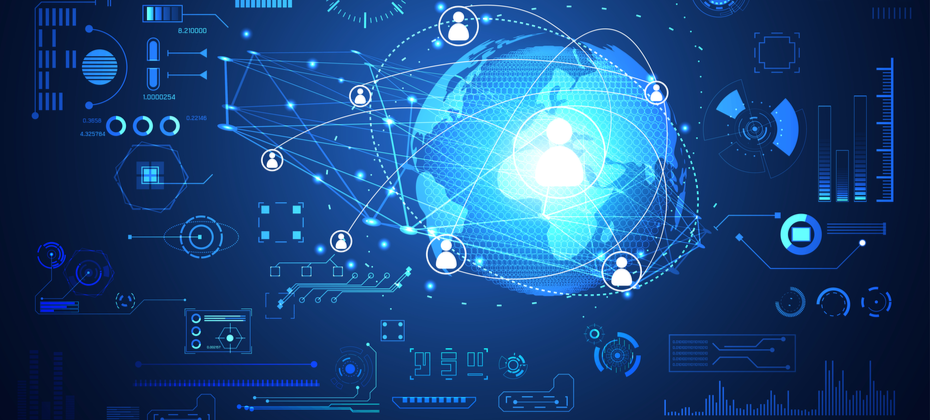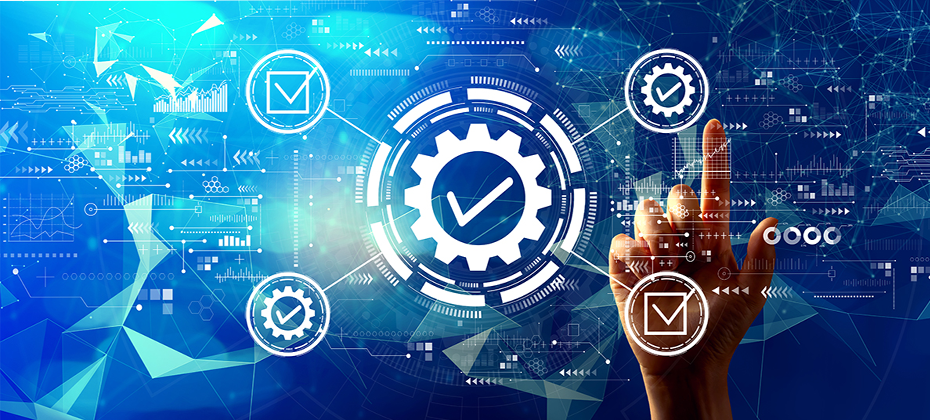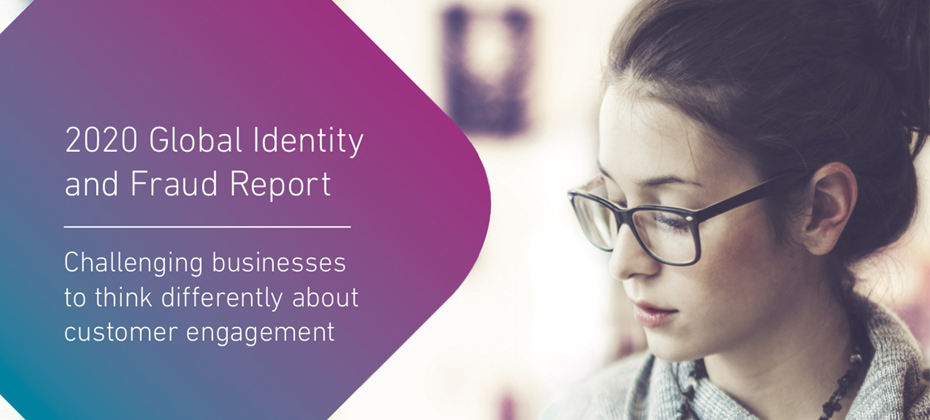All posts by Editor

As I reflect on the impact COVID-19 has had on my work and family life, I’m reminded of the things I once took for granted. My day-to-day routine has evolved into one of working from home, helping to take care of my toddler, and at times, doing so while on conference calls, sorting out the next grocery delivery, and writing this blog. While it’s a challenge, I’ve come to appreciate and value many of the things I’ve once taken for granted. But I also understand, I’m not the only person experiencing change. Across the globe, lives have been upended. The impact of the COVID-19 outbreak has been far-reaching and felt by hundreds of millions of people; whether due to family members that have fallen ill, job loss, shortened working hours or their children out of school. COVID-19 is an existential challenge that no one industry or entity can single-handedly address; we all need to play our part. Some companies, such as Fanatics, Ford, General Motors and Tesla, have shifted production efforts to focus on manufacturing medical resources, including personal protective equipment and ventilators. Others are donating free meals and resources to help consumers across the globe manage during this unprecedented time. Much like these organizations, Experian is committed to helping consumers and businesses navigate our current environment. We’ve expanded our financial education programming with the goal of helping consumers maintain good credit and protect their financial health. We’ve also offered small businesses free access to their Experian business credit report to help them better gauge their financial options and understand what capital is available to them. But as the world continues to combat the pandemic, we, like others, must look for new and additional ways to help. As essential organizations extend outreach efforts for those impacted by the outbreak, we believe data and technology can help them identify the groups that are most at-risk. With finite resources and limited bandwidth, it’s important for these organizations to communicate with at-risk populations and provide essential products and services as quickly as possible. With this urgency in mind, Experian developed At-Risk audience segments, which it is making available free of charge to essential organizations, such as government agencies, healthcare providers and non-governmental organizations, to help combat the fallout of the COVID-19 outbreak. The segments are built in a privacy-compliant manner and provide insights to help essential organizations reach those most in need. Organizations can use the information to determine where to allocate emergency funds, as well as redirect healthcare resources. Because the situation associated with the pandemic is changing seemingly every day and is impacting individuals in different ways and times, we also instituted a daily survey of the general population to gain insights around shifting consumer sentiment as a result of COVID-19. The insights from the survey will help organizations understand consumer sentiment during this difficult time and begin the process to identify at-risk populations. As of April 8, 2020, the survey found that: 73 percent of Baby Boomers are concerned about visiting the doctor and/or would hold off seeking care. 60 percent of Americans are concerned about filling prescriptions and/or accessing healthcare resources. 64 percent of Americans are concerned about their ability to access food and other essentials. COVID-19 has impacted consumers and businesses across the globe. As we all adapt to the new environment, we need to work together and collaborate to find ways to combat the fallout. Experian will not be stopping here, and we are committed to developing new ways to use our resources, data, technology, and creativity to help be part of the solution.

Recently, I had the privilege to serve on a panel during a joint workshop held by the Consumer Financial Protection Agency (CFPB) and the Federal Trade Commission (FTC) to examine the accuracy of credit reports and how to best serve consumers. During the workshop and in following written comments, I shared Experian’s commitment to advance accuracy in consumer credit information and our perspective on how the current regulatory environment supports our efforts to achieve continual improvements. At the workshop, we heard concerns about how inaccuracies in credit reports can impact consumers and businesses in terms of denial of credit or higher-priced credit. For Experian, these are real concerns. Our role as a credit reporting agency is to help facilitate fair and affordable credit to consumers and small businesses, and that’s why data accuracy is mission-critical and central to our corporate values. Since the workshop was held in Washington, DC, it’s no surprise that many stakeholders turned to the topic of reforming the existing regulatory system. Some stakeholders focused on making systemic changes in law and regulation, such as by setting very strict matching standards when credit bureaus receive and issue credit reports. But experience shows us that the current legal and regulatory standards are, indeed, appropriate and we don’t need a sledgehammer to hit a nail. Such actions would have unintended negative consequences and are unnecessary when all stakeholders share the goal of ensuring access to credit. In fact, the central theme I reinforced at the workshop was that the CFPB’s existing supervisory and examination authority, combined with market demand, industry investment and consumer expectations are the most effective ways to continually improve accuracy of credit reports. Let me explain how my over 30 years of experience with Experian leads me to this conclusion. Consumer reporting agencies, like Experian, are regulated by the Federal Fair Credit Reporting Act (FCRA). The FCRA requires that consumer reporting agencies “follow reasonable procedures to assure maximum possible accuracy” when assembling credit reports. Notably, this standard does not set an accuracy rate but appropriately recognizes the complexity brought about by a system with thousands of stakeholders (lenders, users of credit reports, and credit reporting companies reporting billions of pieces of information on hundreds of millions of consumers). It’s been more than eight years since we last saw comprehensive studies to determine the accuracy of credit reports. The two most cited are reports from the Policy and Economic Research Council (“PERC”) and FTC. One of the key findings in both studies was the percentage of consumers that were impacted by material errors in their credit report. In other words, errors that resulted in credit score changes that impacted the interest rate a consumer would pay on a loan. Both studies found that a small percentage of credit reports, 0.5% in the PERC Study and 2.2% in the FTC report, had material errors. While the percentages do represent many consumers (a minimum of 2.5 million to 4.4 million consumers) they also highlight the important need for continuous improvement so that material and consequential errors are the focus of innovation in data integrity. We don’t need to throw the baby out with the bathwater, we need to hone in on targeted and discrete changes. That’s my job at Experian, and I’m passionate about it. In addition to the “maximum possible accuracy” standard, market incentives provide another powerful mechanism to ensure improved data accuracy. Users of credit reports – ranging from banks to employers to government agencies – rely on accurate data to make critical decisions every day about loans, employment access, government benefits, and other important matters. Lenders need accurate data to perform sound risk assessments and provide terms tailored to the borrower’s appropriate risk level. As a result, credit reporting agencies compete to have the most reliable and accurate data. The same is true of lenders reporting data on their customers, as they have incentives to maintain good consumer relationships. Further, if inaccurate data is reported by a lender or maintained by a credit reporting agency, we all spend more time responding to consumer disputes instead of investing in new products and services to help consumers. It’s easy to see why inaccurate data just isn’t good for business! Since the FTC and PERC accuracy studies were completed, the regulatory environment for credit reporting has drastically changed. In 2012, the CFPB began to supervise and examine the credit reporting industry. This regulatory authority allows the CFPB to see the entire credit ecosystem that is composed of not only credit bureaus, but also lenders, other users of credit reports, and entities that furnish data to credit bureaus. CFPB’s comprehensive and continuous examination procedures include directly reviewing the policies, procedures, and practices of major credit reporting agencies. These steps include reviewing how data furnishers are screened, steps taken to minimize the likelihood of incorrect information on a report, measures to prevent duplicative information, and any programs designed to assess the accuracy of consumer information. These actions allow the CFPB to understand the metrics of accuracy and how it improves over time, and to apply the FCRA on a dynamic basis that can meet any challenges unforeseen when the law was originally passed. The CFPB’s supervisory authority thus serves as a powerful tool to holistically address data accuracy. In a 2017 supervisory report, the CFPB stated that “Credit reporting agencies have made significant advances to promote greater accuracy, the oversight of furnishers, and enhancements to the dispute resolution function.” It’s also important that there are ongoing discussions among the credit bureaus about how to move accuracy forward. To that end, joint efforts by the credit reporting agencies pursuant to an agreement with a group of state attorneys general, resulted in a joint working group to look at what can be done collectively to agree on improvements to accuracy. Recent changes include the delayed reporting of medical debt to allow time for insurance to process payments, and the removal of judgment and tax lien information, which did not meet new, elevated standards. The joint working group continues to explore new ways of increasing the accuracy of credit data. A broad, flexible, yet demanding legal structure, combined with strong market incentives and a robust and effective supervisory program, all work together to foster an environment to best serve consumers. As the consumer’s bureau, Experian is committed to playing a leading role in furthering a strong and accurate credit reporting system.

These unprecedented times call for unprecedented measures. Experian supports the signing of the Coronavirus Aid, Relief, and Economic Security Act (CARES Act). We are encouraged by this historic effort to protect consumers and businesses alike. The relief bill is a great step toward economic recovery, directly supporting Americans through expanded unemployment coverage and by providing grants and loans to small businesses. At Experian, we have an unwavering commitment to help consumers and clients manage through this unprecedented period. We are actively working with financial institutions, lawmakers and regulators on tools and initiatives to protect consumers from potential adverse consequences to credit reports and credit scores as a result of financial hardship caused by the COVID-19 outbreak. Additionally, we remain focused on ensuring data integrity as we lead industry initiatives to provide financial institutions methods to clearly identify consumer accounts that are subject to financial hardship as a result of COVID-19 and ensure that such information is properly reflected in credit reports and scores. We’ve built a culture of continuous innovation at Experian, from the way we work to the solutions we create. This has formed a workplace where our teams across the world have a sense of purpose, with a collective desire to help change the lives of millions for the better. Now, more than ever, this is a crucial role we play as we work to create innovative solutions and tools for consumers and businesses to successfully navigate this evolving financial landscape moving forward. Our support of the CARES Act is just one step of many, as we support consumers and customers alike to help bolster the financial ecosystem.

At Experian we have an unwavering commitment to help consumers and clients manage through this unprecedented period. We are actively working with consumers, lenders, lawmakers, and regulators to help mitigate the potential impact on credit scores during times of financial hardship. In response to the urgent and rapid changes associated with COVID-19, we are accelerating and enhancing our financial education programming with the goal of helping consumers maintain good credit and gain access to the financial services they need. This is in addition to processes and tools the industry has in place to help lenders accommodate situations where consumers are affected by circumstances beyond their control. These processes will be extended to those experiencing financial hardship as a result of COVID-19. As the Consumer’s Credit Bureau, our commitment at Experian is to inform, guide and protect our consumers and customers during uncertain times. With expected delays in bill payments, unprecedented layoffs, hiring freezes and related hardships, we are here to help consumers in understanding how the credit reporting system and personal finance overall will move forward in this landscape. One way we’re doing this is inviting everyone to join our special eight-week series of #CreditChat conversations surrounding COVID-19 on Wednesdays at 3 p.m. ET on Twitter. Our weekly #CreditChat program started in 2012 to help the community learn about credit and important personal finance topics (e.g. saving money, paying down debt, improving credit scores). The next several #CreditChat events will be dedicated to discussing ways to manage finances and credit during the pandemic. Topics of these #CreditChats will include methods and strategies for bill repayment, paying down debt, emergency financial assistance and preparing for retirement during COVID-19. “As the consumer’s credit bureau, we are committed to working with consumers, lenders and the financial community during and following the impacts of COVID-19,” says Craig Boundy, former Chief Executive Officer of Experian North America. “As part of our nation’s new reality, we are planning for options to help mitigate the potential impact on credit scores due to financial hardships seen nationwide. Our #CreditChat series and supporting resources serve as one of several informational touchpoints with consumers moving forward.” Being fully committed to helping consumers and lenders during this unprecedented period, we’ve created a dedicated blog page, “COVID-19 and Your Credit Report,” with ongoing and updated information pertaining to how COVID-19 may impact consumers’ creditworthiness and – ultimately – what people should do to preserve it. The blog will be updated with relevant news as we announce new solutions and tactics. Additionally, our “Ask Experian” blog invites consumers to explore immediate and evolving resources on our COVID-19 Updates page. In addition to this guidance, and with consumer confidence in the economy expected to decline, we will be listening closely to the expert voices in our Consumer Council, a group of leaders from organizations committed to helping consumers on their financial journey. We established a Consumer Council in 2009 to strengthen our relationships and to initiate a dialogue among Experian and consumer advocacy groups, industry experts, academics and other key stakeholders. This is in addition to ongoing collaboration with our regulators. Additionally, our Experian Education Ambassador program enables hundreds of employee volunteers to serve as ambassadors sharing helpful information with consumers, community groups and others. The goal is to help the communities we serve across North America, providing the knowledge consumers need to better manage their credit, protect themselves from fraud and identity theft and lead more successful, financially healthy lives. COVID-19 has impacted all industries and individuals from all walks of life. We want our community to know we are right there with you. Learn more about our weekly #CreditChat and upcoming schedule here.

Last year we revealed that there were around 5.8 million people in the UK who were virtually invisible to the financial system. These ‘credit invisibles’ might have limited financial data because they just turned 18 and are new to credit, or they may have recently moved to the UK. Alternatively, perhaps they conduct most of their transactions in cash or simply haven’t used credit for a long time. Either way, we wanted to spotlight the issue, to explain how we can help people regain control of their financial footprints and ensure more people get access to affordable financial products and services. So, as our support for Credit Awareness Week moves into its fourth year, we decided to check in on our progress. The positive news is that we have managed to reduce this financially excluded population by nearly half a million in the last 12 months, to just over 5.3 million – as the map below shows. Credit Awareness Week 2020 offers us all the chance to reflect on all the hard work that so many of us have put into tackling financial exclusion. As a result of this work, more people can access the mainstream services they need, and many are paying less than they otherwise would have. Yet there is much more which needs to be done. We need to continue to innovate and find new solutions to help widen affordable financial access for all. Promoting a better understanding of the things that people can do to help improve their financial track record. Together we can continue our mission to bring more people into the mainstream financial system and deliver better, more affordable products and services for everyone.

To quote The Rime of the Ancient Mariner, ‘water, water everywhere, / nor any drop to drink.’ I think the same can be true of data. While organizations have more data than ever before, very few are able to capitalize on this resource and actually leverage it for insight. There is no question on the value of data. It is viewed as a key competitive advantage, and in some instances, a strategic financial asset. However, translating data into meaningful insight is a completely different task to storing and managing it from a regulatory perspective. We see many companies investing in all sorts of data initiatives, like analytics, machine learning automation, data governance, customer insight, etc. Yet, most companies still report they are not sufficiently data driven. Each year we conduct a global study of data usage and data management practices. This year, we surveyed over 1,000 practitioners on how they want to leverage data. The research dug into some of the obstacles they face and why so few are able to leverage data for insight. We found three key areas emerge. First, there is a large degree of distrust in information. The average professional looking at data does not understand how that data got there, when it is useful, and what state it is in. While data can lead to increased agility and better decision making, a significant level of distrust often causes leaders to fall back on making decisions by gut instinct rather than by informed data insight. In fact, we have consistently seen over the past several years that people believe almost a third of their data is inaccurate. Second, we are seeing a rising level of data debt. Data debt is a lot like technical debt. You have a set of data assets that aren’t necessarily fit for purpose or have a high degree of inaccuracy. Unless you take the time to fix that information and govern it properly, you are always going to have a suboptimal data operation. In turn, poor quality means many companies are not fully seeing the ROI or expected benefit from some of the investments they are making. Finally, there is a data skills shortage. This doesn’t just mean data professionals, like data analysts, chief data officers (CDOs), and data scientists. There is also a general lack of understanding around data within the broader business. We see a growing number of companies talking about enabling wider usage of data across the business and wanting to do more with data insight, but very few people across organizations are truly data literate. Our survey results indicated a tide changing where now most companies report that data literacy needs to be a core competency of employees over the next five years. To generate the level of insight needed to fully leverage data as a valuable asset, organizations have to start to tackle issues around inaccuracy, trust, and certainly data skills. Without fixing these components, organizations will continue to be surrounded by all of this useful data that doesn’t actually provide them with what they need. To learn more about these challenges and our new study, please download the report at https://www.edq.com/resources/data-management-whitepapers/2020-Global-data-management-research/.

As part of the company’s commitment to diversity and inclusion, Experian is celebrating Lunar New Year. This article is by executive co-sponsors of Experian’s Asian American Employee Resource Group (ERG): Dacy Yee, Chief Customer Officer and Jimmy Cheung, SVP of Information Security and Compliance. Lunar New Year, also known as Chinese New Year or Spring Festival, is celebrated in various Asian countries such as China, Taiwan, Vietnam, Korea, Japan, Singapore, Malaysia, the Philippines and others. For some cultures, it’s a 15-day long celebration filled with symbols and traditions that have different meanings. 2020 is the Year of the Rat, which is the first of all the zodiac animals. The Rat is seen as a sign of wealth and surplus in Chinese culture, and those born on the Year of the Rat are optimistic, energetic and likable by all! See the table below to determine your zodiac animal. In our families, the preparation for the Lunar New Year celebration starts a week before the New Year day. We clean the house thoroughly to remove any bad luck from the preceding year and decorate the interior with red objects—a color often associated with good fortune, wealth and longevity in the Chinese culture. Back when we were young, our parents would buy us new outfits to make sure that we looked presentable when visiting friends and families, and would also allow us unlimited access to sweets and treats, as it symbolized a sweet year ahead. The holiday has always been about more than just the coming of a new year. Lunar New Year meant spending time with loved ones, indulging in a delicious Asian feast, and partaking in age-old traditions that gave us a sense of pride and adoration for our culture. These are just some of the things that make the holiday so special to us (that, and receiving hong baos—red envelopes with money—from our elders). This year, our Asian American ERG worked hard to put on an outstanding Lunar New Year; it's our group's largest annual event! Experian enjoyed a diverse cultural showcase of seven different countries, a Chinese sleeve dance, Tinikling (Filipino stick dance), a Taiwanese aboriginal dance, a catered lunch and more. Tinikling is a traditional Philippine folk dance that involves two people tapping and sliding bamboo while dancers step over and in between the sticks. Our Asian American ERG performed tinikling for us today during our #LunarNewYear celebration! 🧧🐀 pic.twitter.com/JiwfzXp3wq — Experian (@Experian) February 6, 2020 We are also proud to announce we partnered with the Center for the Pacific Asian Family (CPAF) and hosted a donation drive to assist in their commitment to ending domestic and sexual violence in Asian Pacific Islander (API) communities. Many of us started the Lunar New Year on a positive note, and we want to ensure that’s true for those in need as well As always, we are so grateful to Experian for providing an environment where we are not only allowed but encouraged to bring our whole selves to work every day. Through various events hosted at Experian campuses across the country, we were able to impact 1,500 employees and expose them to the wonderful cultures of Asia. It is an honor to be able to share this part of our lives with our colleagues and show them how beautiful and rich various Asian cultures are. We look forward to a healthy and prosperous new year. 恭喜發財! Gong Hay Fat Choy! Jimmy Cheung Co-Executive Sponsor Asian American Employee Resource Group Dacy Yee Co-Executive Sponsor Asian American Employee Resource Group Photos taken by Nhan T. Nguyen.

Explore Experian’s insights for customer identity and its interrelationship with security, convenience, and personalization, from consumers and businesses Businesses often talk about creating the ultimate digital experience for customers but far less about the interrelationship between security, convenience, and personalization. This results in siloed security measures at major decision points across the customer journey. And, it’s a disconnect that’s perpetuated through equally siloed CRM systems that strive to identify customer preferences but fail to do so in a consistent and appealing way. The impact on consumers is that they are dragged through a maze of security and risk protocols while at the same time being targeted or re-targeted products and services that are not always relevant. We challenged senior executives at 650 companies to think about whether they can accurately identify their customers and meet their customers’ needs for a relevant experience to not only help them create a more trusted relationship with a consumer but also to reduce fraud losses. We also surveyed over 6,500 consumers who had a lot to say about what constitutes best-in-class digital customer experience. Perception versus reality Our study found that 95% of businesses worldwide believe they are accurately identifying their customers yet 55% of consumers don’t feel recognized. In our survey last year, 84% of businesses said that if they could better identify their customers, then they could easily spot fraud. However, 57% of business reported having significantly higher fraud losses this year versus last year. How can this be true if businesses are in fact as strong as they believe they are at recognizing their customers and thus, presumably by extension, fraudsters? This then begs the question: how are businesses defining “recognition” and is it really working? Are they recognizing a customer to a person or are they able to categorize a customer into prescriptive buckets such as broad demographic delineations? Expectations for customer engagement Our study also found that 74% of consumers say security is still the most important factor when deciding to engage with a business online. This has been a consistent finding over the past two years. In fact, consumers are even willing to give more personal information for greater security and easier access to their accounts later, once they are comfortable. Despite this, over half of businesses are prioritizing personalization over security when making improvements to their customer experience. Consumers acknowledged experiencing and appreciating the changes businesses are making to their digital experience however security remained to be their most important criteria for engaging or continuing to engage with a business. What now? Desires for ultimate experience and concerns for security are still shaping the digital relationship between consumers and businesses where identity is at the heart of every customer decision and interaction. We believe businesses will need to invest further in data, infrastructure, and advanced analytics in order to get to a point of truly recognizing a consumer digitally as opposed to categorizing for broad brush pseudo personalization purposes. Only then will businesses start to make a dent in fulfilling the high consumer expectations for recognition as well as in mitigating rising fraud. Download our report (15 min read) and find out more about: Challenges standing in the way of businesses trying to identify their customers What different businesses and countries are doing to improve identity authentication The new type of customer journey that executives believe will improve the digital experience

I am delighted to announce that Experian has been recognised by the Top Employers Institute as a Top Employer in the UK, Spain, Bulgaria and South Africa. The annual research programme recognises leading employers around the world. Organisations certified as Top Employers dedicate themselves to providing the very best working environment for employees through their progressive ‘people-first’ HR practices. Being recognised as a Top Employer four years in a row is a significant achievement for us, but it wouldn’t have been possible without the support of our incredible workforce. By listening to our people and encouraging new ideas, they have continued to help us develop our working culture and pushed the boundaries to create the best possible working environment. An integral part of this is to encourage diversity throughout Experian and that means building our ways of working and our approach in a way that offers equality of opportunity, supporting our employees from the moment they join our organisation, at every level, and letting people work flexibly, in the way that suits them. We have been working hard to create a place where everyone has the freedom to explore and share interests, no matter what their individual story is, without fear of judgement. The more inclined we are to bring our rich outside world to work, the more we will expose others to new perspectives and different thinking, making Experian a great place to work. I’m extremely proud of the progress we’ve made over the last 12 months, with my personal highlights including our on-going partnerships with the likes of Women in Data, Stonewall and the Business Disability Forum, as well as the development of our employee health and well-being offerings. It’s important that we continue to build on this success, looking for new ways to do things, and continuing to provide a working environment that our people love.